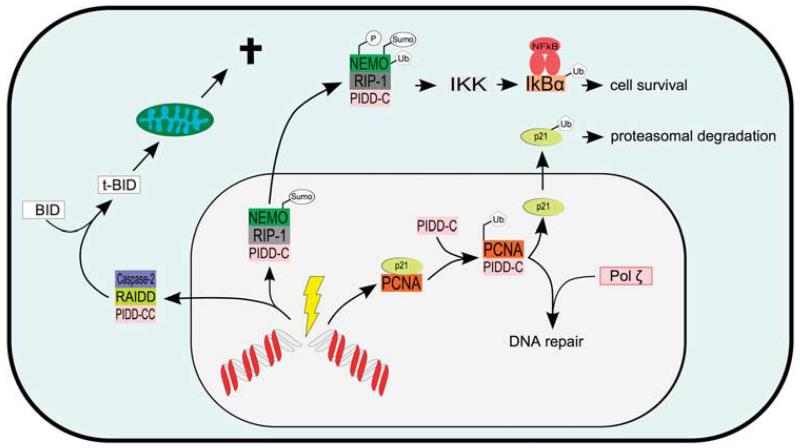Figure 2.
Cellular responses reported to engage PIDD. PIDD is induced in response to DNA damage in a p53-dependent manner, and depending on the type and severity of the damage is recruited to different complexes. A low amount of DNA damage leads to autoproteolytical cleavage of full length PIDD to the PIDD-C form. This fragment associates with NEMO and receptor interacting protein (RIP-1), thereby facilitating postranslational modifications on NEMO leading to activation of NFκB. After more severe genotoxic stress, PIDD-C is further autoproteolytically cleaved to the PIDD-CC fragment, which can bind to RAIDD and caspase-2, which is subsequently processed and activated. In response to UV-IR, PIDD-C can displace p21 from proliferating cell nuclear antigen (PCNA), thereby facilitating recruitment of the translesion synthesis repair machinery.

